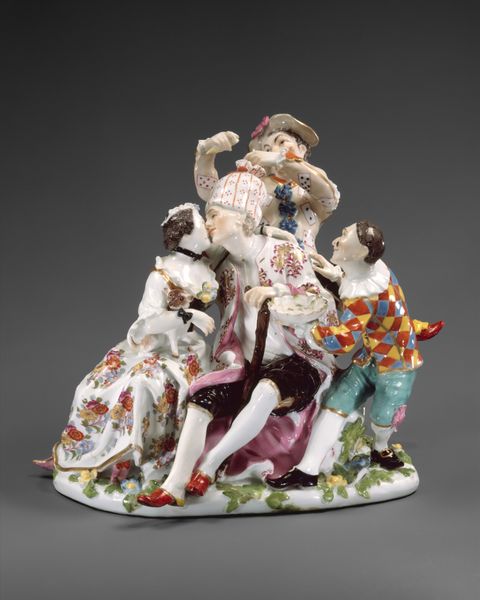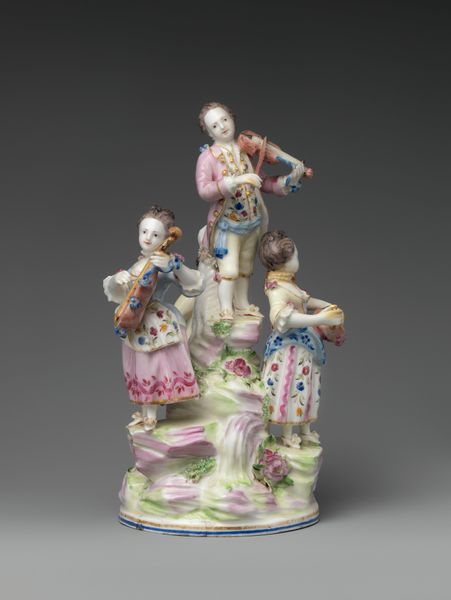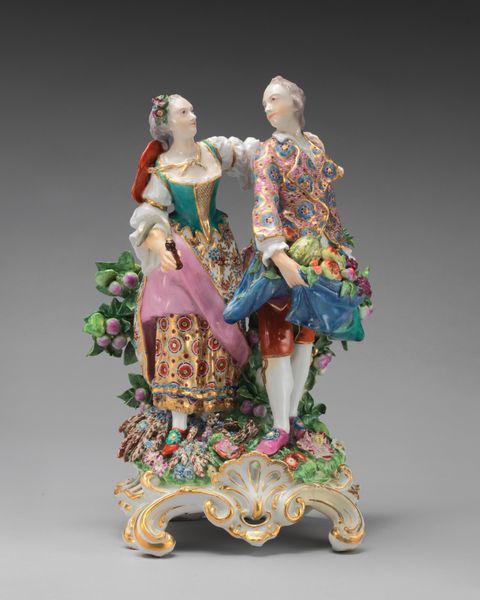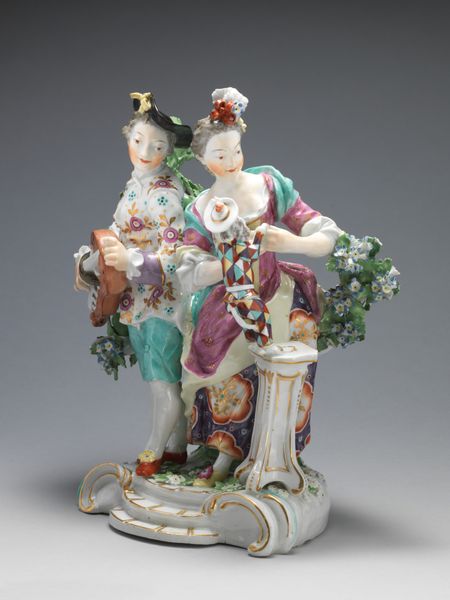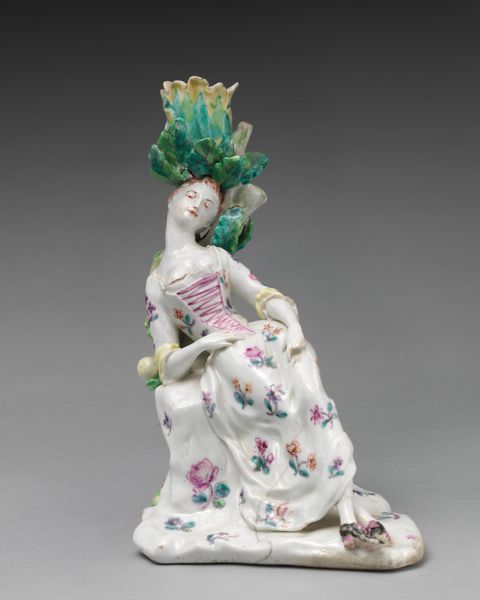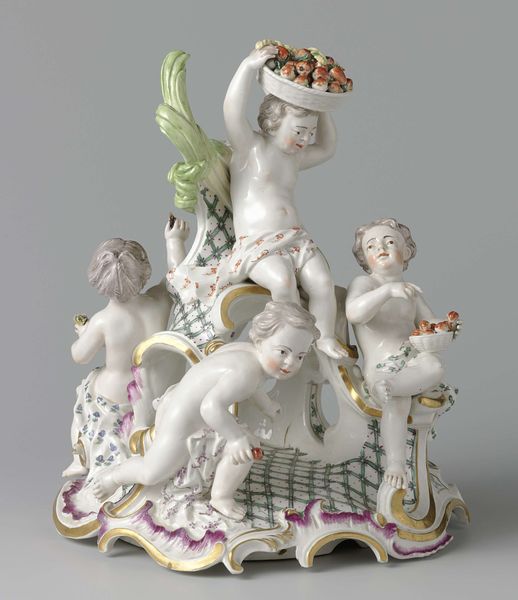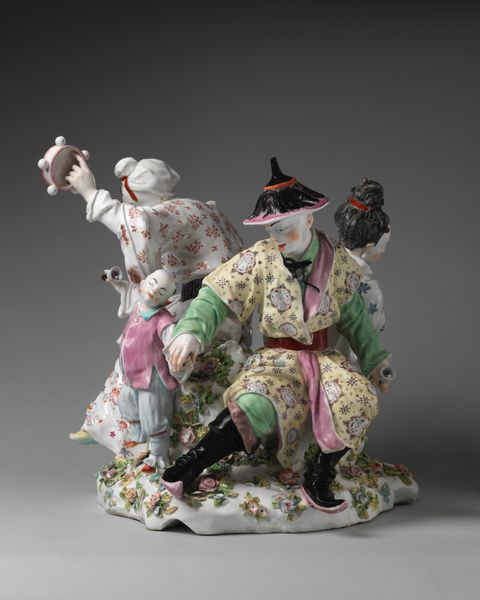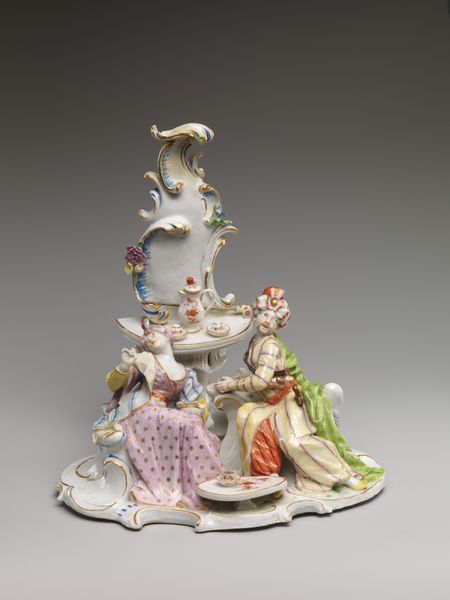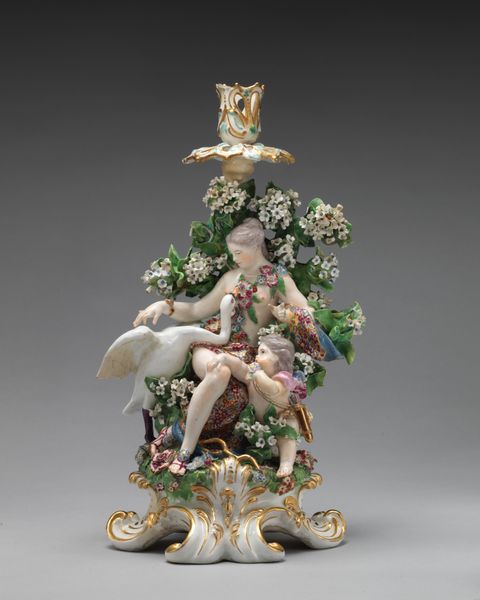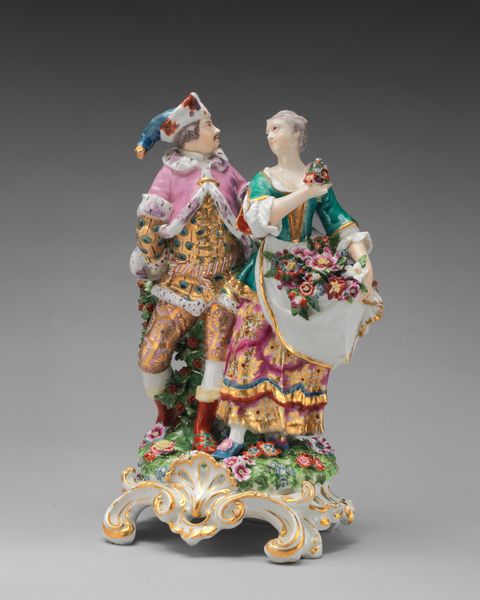
ceramic, porcelain, sculpture
#
ceramic
#
porcelain
#
figuration
#
sculpture
#
genre-painting
#
decorative-art
#
decorative art
#
miniature
#
rococo
Dimensions: 26 × 21.6 × 15.9 cm (10 1/4 × 8 1/2 × 6 1/4 in.)
Copyright: Public Domain
Editor: Here we have "Lovers and Jester," crafted around 1765 by the Derby Porcelain Manufactory. It’s porcelain, so delicate. I’m immediately drawn to the intricate details and the playful scene. What story do you read in the crafting and the making of it? Curator: Consider the Rococo era, with its love for ornamentation and extravagance. Porcelain was an expensive commodity, made through laborious and alchemical processes. "Lovers and Jester" reflects aristocratic society; a porcelain imitation, crafted to imitate the affectations of courtly love for domestic consumption. The piece isn't so much about depth as surface. What can this level of decorative and material precision tell us about its audience and intended market? Editor: That's interesting. So, it’s not necessarily about romantic depth, but more about showing off refinement through a material like porcelain, acquired through specialized skills and trades. Curator: Precisely! Think about the labor invested in mining the clay, processing it, the division of labor to craft such delicate adornments and details, and then the distribution through burgeoning trade networks. This scene of frivolity masks an underlying industrial effort. Even the delicate floral patterns—were these painted freehand or through a transfer process? This small change changes how we see the labor and product and it adds value. Editor: Wow, I never thought about it that way. The artwork itself becomes less about the "love" and more about this wider industry that involved multiple areas. Curator: Absolutely. And understanding that industry, the materiality of porcelain, gives us a clearer lens through which to view the social aspirations and consumption patterns of the elite during that era. The sculpture itself is a symptom. Editor: I will never look at decorative arts the same way. I now have the desire to inspect closely not only what has been represented, but also the methods of production involved in creating the piece. Curator: That is the key to really seeing.
Comments
No comments
Be the first to comment and join the conversation on the ultimate creative platform.
